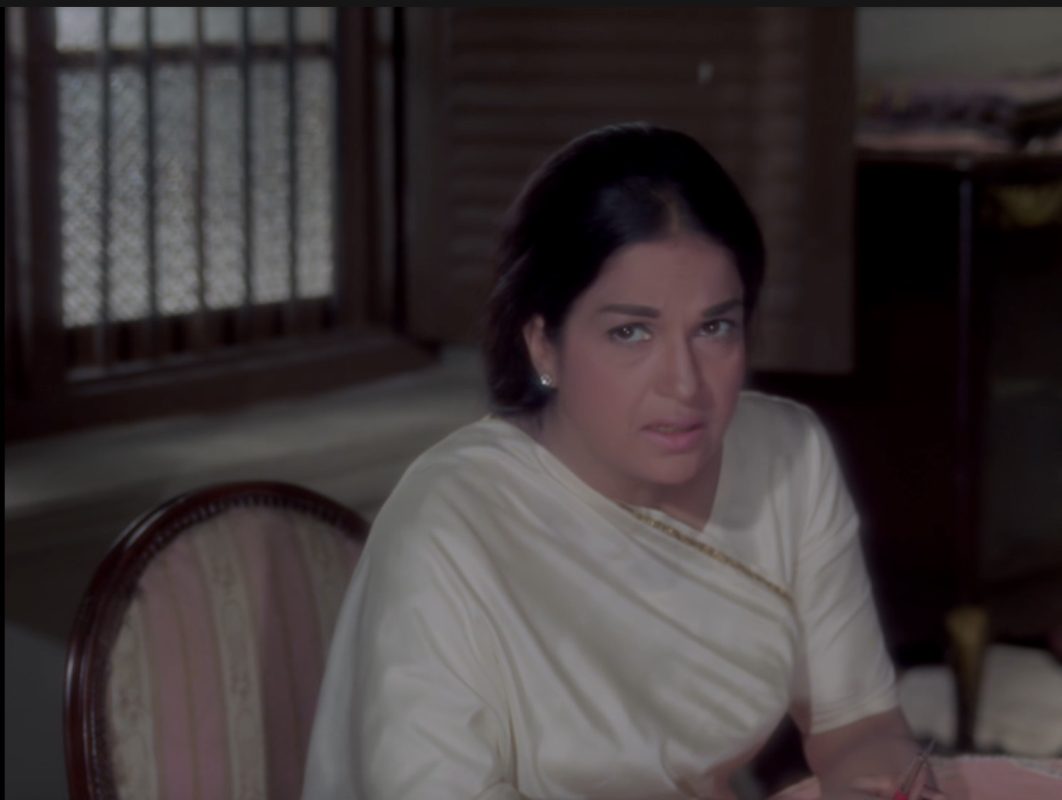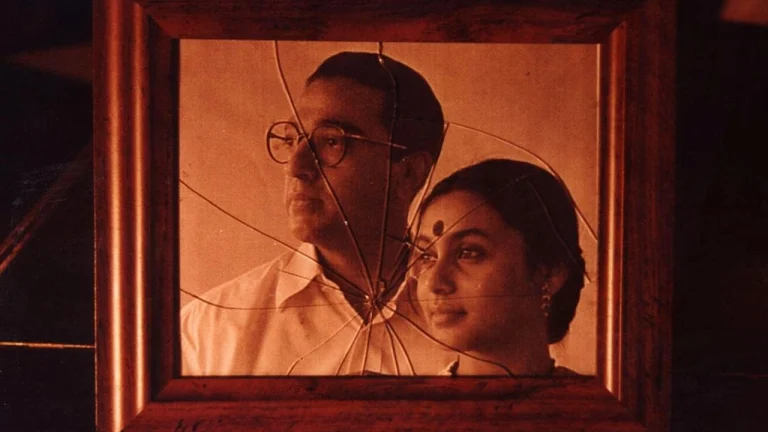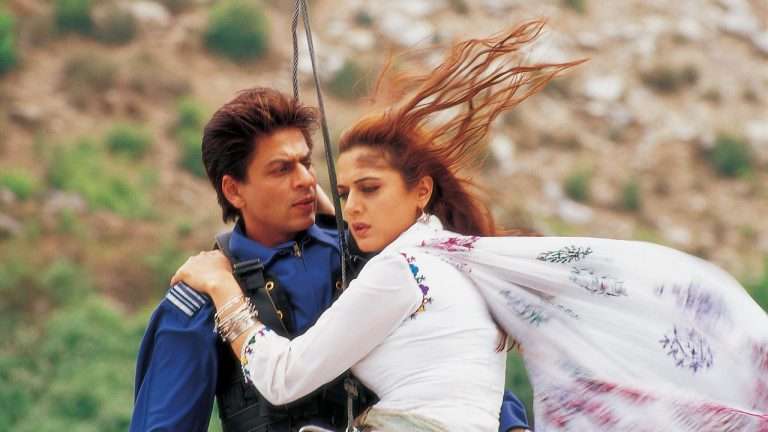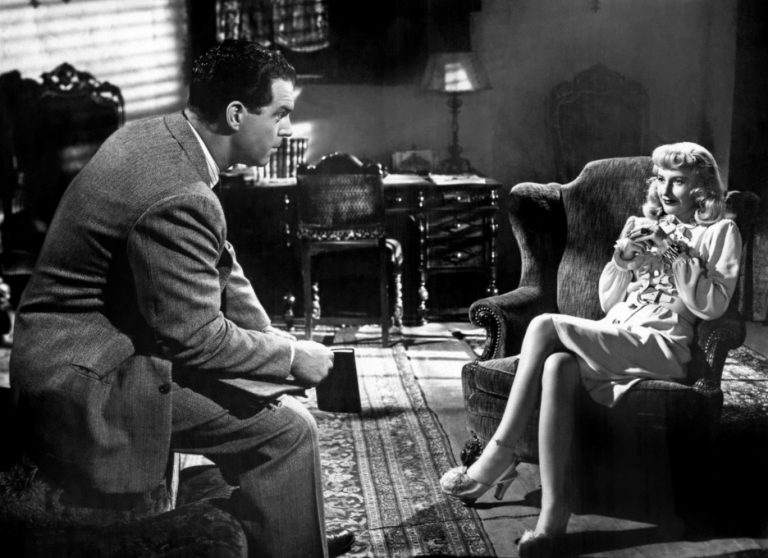Indian Cinema is largely considered a male-dominated industry, with women largely relegated to decorative roles. Women-centric stories do sometimes find their way to the celluloid, but are these stories truly reflective of the issues that need to be addressed? Like Women’s Day in India, Indian cinema also celebrates women in a way that defeats the purpose of commemoration.
The Dutiful Wife and Mother
In the history of Indian cinema, there has always been a space for ‘women-centric’ films. These films are dominated by a female protagonist and the narrative revolves around her struggles. Unfortunately, the tropes that define the struggles of women are so regressive that end up reflecting the patriarchal anxieties. The most common trope of an essential women-centric film is a domestic wife who has to face the wrath of her in-laws or husband. Despite being ill-treated by her husband, she remains a Pativrata hoping for the people around her to realise her worth.
The trope of the tormented wife or daughter-in-law has been perpetual in Indian cinema since its inception, from the “Andhare Alo” (1922), where we find a trope commonly found in Indian cinema – a husband strayed from the path of marital bliss and involved with a courtesan and a dutiful wife pining for her husband to return back. Here the sexual liaison is treated with a demarcation between the “good wife” and the “bad courtesan”, with the man able to reclaim his moral high ground by repentance but this repentance is not permitted for the courtesan as she is treated as an outcaste and bad influence who lure the men through provocations. In the multiple adaptations of “Devdas,” the courtesan becomes a caregiver after falling hopelessly in love with the wayward protagonist.
The love of a man makes an unchaste woman leave her vocation to live her life as a wife. In “Sharafat” (1972), a dancer falls in love with a college professor, leaving her vocation to become a wife. Similar tropes are used in many Muslim socials, a genre which found many takers till the 1980’s. One of the last significant films of this genre was “Tawaif” (1985), wherein a courtesan is competing with a noblewoman to attain the love of a man. This trope continues to flourish throughout the history of Indian cinema with films like “Saheb Biwi aur Ghulam” (1962) where the wife takes up alcohol so that her husband doesn’t visit a courtesan regularly.
In “Abhiman” (1973), the husband, out of jealousy of his wife’s increasing popularity, takes refuge in the companionship of another woman. The wife goes into depression due to her husband’s behavior, ruining herself personally and professionally. In the 21st century we have a series of films where the girl seeks different ways to get back her husband or lover who is involved with another woman. These films include “Main Hun Na” (2004), “Dulha Mil Gaya” (2010), etc. But sometimes, changing your appearance is not enough to please the husband or family, you have to overhaul your personality to get accepted. In “Kisi se na Kehna” (1983), an educated doctor has to act like a traditional domestic woman to please her orthodox father-in-law.
This film was turned into a TV show under the name “Jugni Chali Jalandhar” (2008). A similar trope is utilized in “Biwi ho to Aisi” (1988) where the father-in-law is replaced by the mother-in-law. In the 1980s, there was a slew of such regressive films where a woman was idealized for being a docile wife and a woman with aspirations was ridiculed. Motherhood was seen as the ultimate paradise of a woman. The most striking representation of such demarcation is seen in films like “Suhaagan” (1986) where two sisters represent the two opposite sides.
Sridevi’s character is shamed, ridiculed, and ostracised not for her reluctance to fulfill the duty of a wife and mother, but for being educated, and for believing in love marriage. She is redempted only after her death. Her sister has a blissful married life because she is uneducated and traditional, is a dutiful wife and mother, and follows the orthodox dictums of her father. The film draws upon the Ramayana narrative wherein the character of Sridevi has to face all the ostracization because she crosses her “Lakshman Rekha”. In “Ye Ishq Nahi Aasan” (1984), the wife bears the ignorance of her alcoholic husband who is trying to nurse a heartbreak by engaging with a courtesan.
When she decides to enter the area, only to be molested by the lecherous men and be rescued by her husband, who then provides her with a lecture on the behavior of a woman from a decent family. The transgression of a man is justified as soon as the couple achieves marital bliss. By the 1980’s this trope of a Pativrata woman became so rampant that a film like “Pati Parmeshwar” (1989) was banned for its regressive narrative. Even in otherwise meaningful films like “Masoom” (1983), the wife ends up forgiving her adulterous husband because she ends up embracing motherhood over the act of adultery. The most regressive example of the trope of a docile woman can be seen in the film “Saajan ka Ghar” (1994) wherein the girl is mistreated by her father, her stepmother, her mother-in-law, etc.
Rather than standing up for herself, she takes up all the beatings of the family, chooses to torment herself for the sake of the family, and eventually does so while waiting to be validated by her in-laws. The women are expected to leave their professional lives and careers behind to become a wife, a trope that is relevant even today, thanks to the constant supply of TV shows modeled on this theme, which are watched in large numbers by women only. Even in films like “Sultan” (2016), the female wrestler leaves her career in jeopardy because of marriage and motherhood.
In “Life in a Metro” (2007), the woman leaves her suitor behind and goes back to her cheating husband for the sake of her child. The blind veneration of motherhood undermines the spirit of womanhood and her agency in society. In a much-trolled Pan Masala advertisement, actor Annu Kapoor promotes women’s empowerment by pointing out that “today’s girl is tomorrow’s mother” (as if women don’t have a future beyond motherhood and that they are brought up to become mothers). Our films have made a male figure so central to the existence of women in cinema that she continues to seek validation from the male figure. Many times, that validation comes with her death, which proves the purity of her actions and character.
More Related to Women-Centric Films: 25 Great Feminist Films That You Should Watch
Films of this kind cater similar narrative as seen in “Ahista Ahista” (1981), wherein the girl kills herself when she is jilted by her absentee father and her lover. Her death unfolds her unblemished character. If not death, the failure of a male companion forces a woman to leave her bright future and her professional growth. In “Kuch Kuch Hota Hai,” the female protagonist leaves her studies in between because of her failure in love. Similarly, the female lead chooses a secluded life after being humiliated by her lover’s mother in “Half Girlfriend” (2017) and by her lover in “Jab We Met” (2007).
Even when we find strong female characters, their character arc is often about getting respect from their husbands and in-laws. In “Tanu Weds Manu Returns” (2015), all the talk of female empowerment becomes a facade as the female protagonist is seen vying for the attention of the male protagonist desperately. In the past few years, Hindi cinema has been showing the acts of Jauhar as an act of bravery, where the honor of a woman is given more value than her life, and the commemoration of her ritual suicide shows how much the value of a woman is understood in the absence of a male figure.
Becoming of a Woman
Another common trope found in many women-centric films is the transformation of a woman as she attains maturity. By maturity, the film signifies the ability of the woman to fulfill her patriarchal duties as wife and mother, and her ability to consummate her marriage. From “Uphaar” (1971) to “Geet Gaata Chal” (1975), “Balika Vadhu” (1976) to “Prem Rog” (1982) to “Abodh” (1984) and “Anubhav” (1986), etc., a woman is supposed to attain maturity to fulfill her duties. Most of the time, this process is not intrinsic but rather conditioned by external forces.
In “Uphaar” and “Balika Vadhu,” the maturity comes because of the physical and/or emotional separation from her husband, in “Prem Rog” by widowhood and sexual assault, and in “Anubhav” and “Tan Badan,” by the adultery of the man. A related trope in cinema is the ‘Taming of the Shrew’ where a privileged girl is tamed into a domestic woman by a man through questionable and often non-consensual methods.
Women Seeking Vengeance
Revenge dramas are another genre where women-centric films try to score. Most of such films are based on a specific trope- a girl, who is in most cases, sexually assaulted seeks revenge for the injustice meted out to her. Here, two types of narratives are seen- one, the girl using her sexuality to entice the men and using the opportunity to kill them. This trope often reduces female characters to visual appeal, overshadowing their agency and the gravity of their experience. The woman’s sexuality is foregrounded, with revenge serving as a pretext for depicting sensuality. Some of these movies do talk about the larger issue of female injustice but more often than not these issues are dealt with on a very superficial level.
Such movies include a slew of B and C-grade Hindi films but some also feature prominent actors. “Kudrat ka Kanoon” (1987) uses the trope of sexual assault and the return of a girl as a seductress, while “Khoon Bhari Mang” (1988) uses the same trope but without the sexual assault. The B and C-grade films are too many to recount ranging from “College Girl” (1990) to “Bold” (2006) to the many installments of the “Hate Story” franchise. The other trope is the genre of dacoit dramas wherein the assaulted girl chooses to join a group of dacoits and becomes a desexualized woman seeking revenge.
Sometimes revenge is sought directly without the element of dacoity like in films like “Insaaf ka Tarazu” (1980), which in a way started the trend of such exploitative revenge dramas. While the theme of rebellion was explored with nuance in the gritty “Bandit Queen” (1996), most films in this genre relied on clichéd narratives that framed a survivor’s path forward in reductive and limiting ways. (other than suicide, which becomes a point for the male protagonist to seek revenge in films like “Kabil” (2017), “Ankush” (1986), “Aawaz” (1984), etc.). These options included living a secluded life or taking revenge by becoming an outcast.
Sometimes, such narratives are mixed with the fantasy genre with the revenge-seeking as Nagin seen in films like “Nagin” (1976), “Nagina” (1986), “Naache Nagin Gali Gali” (1988), “Nigahein” (1989), “Nagmani” (1990) and many seasons of “Naagin” TV show. The Dacoity dramas are an equally popular genre with films like “Kahani Phoolwati ki” (1985), “Daku Ramkali” (1985), “Daku Hasina” (1987), “Sherni” (1988), etc. These films became a staple of Indian cinema in the ’90s and early 2000s, with director Kanti Shah making dozens in the genre, often reducing female characters to objects of exploitation. These movies despite having a woman at the center of the narrative were demeaning and disturbing from a gender perspective.
All in all, most of the films with female characters in India end up reinforcing the stereotypes about women and are a tool for the objectification of women. Thus, we need to be very cautious in making a distinction between women-centric films and a true feminist film.









